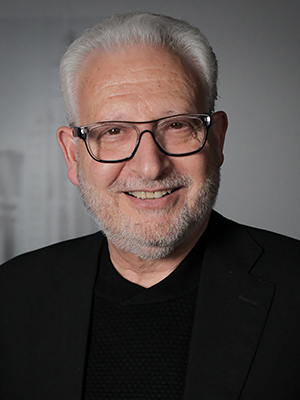 “An iteration of TAVR system and accessory technologies such as cerebral embolic protection devices contribute to safe TAVR procedures and reducing complication rates,” Leon said. “The minimalist strategy also grew significantly in importance, with almost all TAVR patients worldwide being a candidate for some “minimalist” procedural strategy.”
“An iteration of TAVR system and accessory technologies such as cerebral embolic protection devices contribute to safe TAVR procedures and reducing complication rates,” Leon said. “The minimalist strategy also grew significantly in importance, with almost all TAVR patients worldwide being a candidate for some “minimalist” procedural strategy.”
The Chain of TAVR RCTs
Leon showcased 24 completed or ongoing RCTs regarding the four spectrums of TAVR surgical risk (low, intermediate, high, extreme), and even of asymptomatic aortic stenosis (AS).
In particular, more than 15,000 patients in the U.S. have been enrolled in FDA studies (including 10 RCTs) since 2007, with multiple generations spanning four different TAVR systems.
The PARTNER trial included more than 9,000 patients with five RCTs and more than 200 manuscripts and abstracts published.
Results showed dramatic change in clinical outcomes and complications. The 6.3 percent mortality rate found in the PARTNER IB trial improved by 0.4 percent in the PARTNER 3 trial. Although baseline patient characteristics differed, many other factors contributed to the improvement.
TAVR guidelines have since upgraded several patient groups to a Class IA indication - although Leon argued that much of the early works involved only a minority of the AS population.
“High and intermediate risk population pertains to about 20 percent of the total AS population,” Leon said. “The ‘holy grail’ is the 80 percent of aortic stenosis patients receiving surgery in the so-called low-risk category. There is a real global effort to understand how low-risk patients respond to TAVR,” Leon said.
Two papers published in the New England Journal of Medicine in 2019 concerning both balloon-expandable and self-expandable devices were actually four RCTs that included a total of 3,661 patients.
The PARTNER 3, Evolut Low-Risk trials in the U.S. have already been published, while the NOTION and UK-TAVI trials are not yet published.
Evolut Low-Risk was a 1:1 randomization trial with truly low-risk patients. Results clearly demonstrated no significant difference between TAVR and SAVR for the primary endpoint at one-year (5.3% vs 6.7%). There was also no significant difference in all-cause mortality (Log-rank P=0.412) and a clear reduction in heart failure hospitalization (Log-rank P=0.006) and disabling stroke (Log-rank P=0.024). Importantly, hemodynamics appear to be not just similar but even better in the TAVR population.
Similarly in the PARTNER 3 trial, the primary endpoint of death, stroke, and rehospitalization at one-year demonstrated not only non-inferiority (Pnon-inferiority<0.001) but also superiority (Psuperiority=0.001). A composite outcome of death or disabling stroke was also not significantly different between the two groups (2.9% vs 1.0%, HR 0.34, 95% CI0.12-0.97, P=0.03). Interestingly, composite outcomes in the TAVR group indicated only a 1 percent event rate.
Two-year clinical outcomes from the PARTNER 3 trial published in JACC showed the two-year primary endpoint was significantly reduced after TAVR versus surgery (11.5% vs. 17.4% HR 0.63, 95% CI 0.45-0.88, p=0.007).
However, the time-to-event curve in death or disabling stroke showed narrowing of the curve after one year, requiring longer follow-up. They also examined quality of life and showed significant benefit associated with TAVR compared to SAVR even in these low-risk patients.
Leon noted favorable outcomes of TAVR are consistent across the entire surgical risk spectrum, suggesting that surgical risk estimation should no longer be the primary bias to guide the decision-making process between TAVR and SAVR.
One caveat was that at least 30 percent of patients were excluded from the low-risk RCTs. Particularly, patients with bicuspid, small/large annulus, multivalve disease, and high-risk TAVR anatomy were excluded.
“Overall, the evidence points toward a shift from a surgery-first strategy to a TAVR-first strategy for most AS patients,” Leon said. “The Heart Team should weigh clinical and anatomic characteristics to identify the best treatment option for individual patients with transfemoral TAVR replacing surgery as the default therapy in most cases.”
Guideline Changes
The American College of Cardiology and American Heart Association (ACC/AHA) recently updated their guideline for VHD, indicating a preference for TAVR in patients with high or prohibited surgical risk.
Interestingly, the guideline recommended TAVR to those under 65-years old for the first time as alternative to surgery in patients who are eligible for a bioprosthetic valve.
Detailed data supplement of the ACC/AHA guideline that showed absolute effect estimates per 1,000 patients for outcomes comparing TF-TAVI to SAVR demonstrated mortality at two-years, life-threatening bleeding atrial fibrillation, and acute kidney injury was significantly reduced in the TAVR group compared to the SAVR group.
However, SAVR was favorable for patients with a permanent pacemaker and moderate to severe heart failure in terms of aortic valve re-intervention at two- and 10-years.
“Physicians need to understand and communicate these factors to patients and physicians when deciding between therapies,” Leon said.
Going Forward
Many knowledge gaps still exist, and although most believe the TAVR revolution has already plateaued, Leon asserted the complete opposite.
“Meta-analysis including five small studies suggested that cerebral embolic protection (CEP) may be beneficial for stroke prevention,” Leon said. “But without question, we need more data to understand whether embolic protection should be part of the procedure.”
For CEP, the SENTINEL CEP randomized trial had demonstrated a 72-hour stroke rate reduction but was underpowered to show significant difference in the clinical endpoint.
The importance of valve leaflet thickening by CT studies and valve thrombosis also need clarification, Leon said. A research team led by Raj Makkar, MD (Cedars-Sinai Medical Center, Los Angeles) published several findings on subclinical leaflet thrombosis and hypoattenuating leaflet thickening (HALT).
The CT sub-study from the PARTNER 3 trial involving 435 patients found a high frequency of HALT with greater incidence in the TAVR group than the SAVR group at 30-days (P=0.03), although this was equalized at one year (P=0.19).
Looking at the natural history of untreated patients, half of patients who showed HALT at 30-days reported HALT disappearance at one-year without any treatment. Furthermore, 21 percent of patients without HALT at 30-days developed HALT at one-year.
Leon commented, “This phenomenon still needs clarification. HALT usually does not record hemodynamic changes on echo parameters - including the mean gradient - and even in the most severe HALT group. So far, clinical associations with HALT have been weak.”
Bioprosthetic valve durability also came to the forefront since the European
Association of Percutaneous Cardiovascular Interventions (EAPCI), European Society of Cardiology (ESC), and European Association for Cardio-Thoracic Surgery (EACTS) published new structural valve deterioration (SVD) and bioprosthetic valve fracture (BVF) definitions in 2017.
Analysis indicated rate of severe SVD at five to eight years and BVF at six to eight years using the new definition was 1.3 percent and 3.7 percent, respectively, indicative a “rather low” event rate even though the data set was not large.
“Safety and durability of the TAV-in-TAV procedure as well as the safety of failed TAVR surgical needs further research as this is an entirely new field and will develop over the next seven years,” Leon said.
Coronary access issues, especially in patients with coronary artery disease and a younger population, also require attention with a better understanding of issues relating to commissure alignment and coronary re-access.
Management of post-TAVR conduction disturbances is also garnering attention as the focus from new pacemaker implantation shifts also to new LBBB after TAVR, Leon noted.
Results from PARTNER 1 and PARTNER 2 trials demonstrated new LBBB was a strong predictor of death, cardiovascular death, rehospitalization, and death or rehospitalization.
Meanwhile, optimal antithrombotic pharmacotherapy after TAVR is still “poorly understood” and the recent POPular TAVI trial indicated that dual antiplatelet therapy (DAPT) is most likely not the answer.
The POPular TAVI trial showed that DAPT did not show any benefit over aspirin in terms of all bleeding, non-procedural bleeding, and composite of CV mortality, non-procedural bleeding, stroke, or MI.
Issues regarding bicuspid AS, asymptomatic severe AS, symptomatic moderate AS aortic valve remodeling in ongoing clinical trials were also presented while new techniques including aortic valve remodeling using Leaflex AVRT were introduced.
Leon concluded that the SEQUENCING concept is crucial for shared-decision making regarding therapy prioritization for the 65- to 75-year old patient group.
Edited by

Euihong Ko, MD
Kokura Memorial Hospital, Japan


